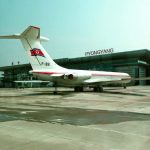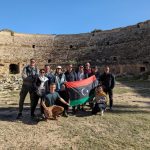Iraq (Iraq proper, Baghdad Iraq or Southern Iraq, as you might call it) and Iraqi Kurdistan are destinations that are dear to our heart, having been doing tours there for years now. While the people of those two regions have the same passport, use the same money and live in the same country (although they might disagree with that) those two regions are also quite different and both worth a visit! In this article, we’ll be looking at differences between Southern Iraq and Iraqi Kurdistan.
Infrastructure and the Public Sector

While both regions’ economies are based on oil revenues and making quite a lot of money, the way this money is used to develop the region is quite different. Southern Iraq suffered the most from the aftermath of Saddam Hussein as well as the chaos caused by ISIS. As such, you’ll find that public services and roads are often of much lower quality in Southern Iraq than in Kurdistan. A lot of buildings of Southern Iraq are in dire need of renovation, while things do not seem so bad in Iraqi Kurdistan. Buses services linking Kurdistan to other countries such as Turkey abound.
Due to its relative stability, Kurdistan has also seen more foreign investment than Southern Iraq.
It is not only a difference in terms of quality, but some of the services are completely different in style. For example, the army in Southern Iraq is mostly composed of militias after Iraq was disarmed in the first administration that came after Saddam Hussein, under the USA’s tutelage. Kurdistan has established its own army, the Peshmerga, and the forces of Southern Iraq are not allowed on its land. Licenses plates on cars are also of a different design and policemen wear a different costume.
Politics


Politics all around Iraq can still feel the shadow of Saddam Hussein. The relative autonomy of Iraqi Kurdistan, for example, was a result of the no-fly zone established after the world witnessed the atrocities of the Anfal campaign. Persecution was also harsh in the South as Shiites were heavily repressed after they tried to oust Saddam. Nowadays, the tide has turned and those who were repressed are the ones running the country. Sunnis mostly live north of Baghdad, in places such as Tikrit and Mosul, while the Shias live South of Baghdad.
The central government of Iraq is led by three persons. Traditionally, the Prime Minister is Shiite, the Speaker is Sunni and the President is Kurd. This is a decision to symbolise the unity of the country. However, the Presidential function is mostly symbolic, with the Prime Minister having the most power.
Iraqi Kurdistan has its own president. Two main families have been spearheading politics in Iraqi Kurdistan since the start of its struggle for autonomy, the Barzani and the Talabani. Those two families have often been at odds, most strikingly during the Kurdish civil war. The Kurdish civil war has opposed the PUK (Patriotic Union of Kurdistan) led by the Talabanis and with its headquarter in Sulimaniyah to the KDP (Kurdistan Democratic Party) led by the Barzanis, with its headquarter in Erbil. Nowadays, both parties coexists albeit often rivalling and having their own spheres of influence. As a tradition since, the President of Kurdistan is from the KDP and the person sent to be president of Iraq is from the KDP. As a side-note, it is important to mention that the politics of Iraqi Kurdistan are radically different from the politics of the other 3 regions of Kurdistan: Iranian Kurdistan, Syrian Kurdistan and Turkish Kurdistan.
Language
The official language of Iraq is Arabic with Iraq having its own dialect. In Kurdistan, the main language is Kurdish with two main dialects, Sorani and Kurmanji. In schools of Kurdistan, subjects are taught in Kurd and Arabic is an isolated subject. Islamic studies are also taught in Arabic. This means that it is not all Kurds that are proficient with Arabic and some have better English (another language part of the compulsory curriculum) than Arabic. Likewise and perhaps more understandably, the Arab majority generally do not speak Kurdish.
In the streets of Iraqi Kurdistan, signage is in Kurdish, while it is in Arabic in the rest of the country. Since both languages use the Arabic script (although Kurdish can also be written with Latin letters), this fact often escapes the non-initiated.
Religion and Culture


Religion is a hot topic in Southern Iraq. The population is divided nearly half-half between Shia Muslims and Sunni Muslims, which has been sadly used to create divisions within the people. Southern Iraq hosts some of the holiest sites for Shiites outside of Iran such as the shrines of Najaf and Karbala. Religious rallies are very frequent and pilgrims can be seen on a near-daily basis. Those religious divisions were repressed under Saddam regime, only to blowback out of proportion as he was ousted.
While there were pockets of Christians, Yazidis and other religions in Southern Iraq, the recent ISIS conflict has forced most of those to flee to Erbil which has made Iraqi Kurdistan most diversified than Southern Iraq.
While most Kurds are Sunni Muslims, religion is not a determining factor to be Kurd, There are Yazidi Kurds, Shiite Kurds and Christian Kurds. The Kurdish identity is mostly a linguistic and cultural one. This is why, for example, alcohol can be found all around Kurdistan and in most of its regions, you’ll find women going around with their head uncovered. In the South, alcohol is heavily frowned upon and cannot be readily found outside of Baghdad. Most women there go out wearing an abaya. There is a growing movement of Islamic conservatism growing in Kurdistan however.
Both regions have their own distinct culture. For example, the traditional costume of Kurdistan and Iraq are quite different, with Kurds wearing a military style shirt, a big belt and baggy pants. Iraqis prefer to wear the Arabic keffiyeh. Each region has its own distinct television shows, movies and literature.
Landscapes


The land of Iraqi Kurdistan looks drastically different from what is found in the rest of Iraq. Most of Iraq is an arid climate, which means it has deserts and plains with very little vegetation. In the meantime, Kurdistan is a semi-arid mountainous land. This means that more vegetation is found in Kurdistan although a lot of its fauna has taken time to restore itself after the disasters caused by Saddam Hussein’s attacks on Kurds, like the chemical massacre of Halabja.
Some of the rivers of Iraq cross both Kurdistan and Southern Iraq, such as the Tigris. Iraq also has marshes near Basra. Generally, the weather in Kurdistan tends to be cooler than the weather in the rest of Iraq, due to its general altitude.
What is similar then?
As mentioned previously, all Iraqis use the same passport (however, the visa process to visit Kurdistan is different from the visa process of Southern Iraq)
Food is also very similar in both regions and tea is a massive part of the culture, with teahouses all over the country.
Both cultures put significant importance in literature with both Iraqi and Kurdish poets being venerated.
The people in both parts tend to be very hospitable and keen to meet foreigners.
The best way to see what is different and what is similar between both regions, however, is certainly to join us on our next Whole Iraq Tour!





